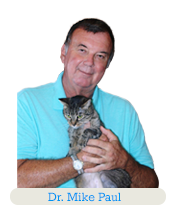

The term diaphragm is from the ancient Greek diaphragma meaning “to partition or divide” -- which is in part what the diaphragm does. The diaphragm is an internal skeletal muscle membrane that separates the abdomen from the thorax or chest containing the heart and lungs. The diaphragm plays a major role in breathing in that as it contracts and enlarges the chest cavity it creates a vacuum that draws air into the lungs. In some conditions the diaphragm may be compromised when the fibers of the muscle separate or tear loose from the body wall. The most common cause of this loss of integrity of the diaphragm is blunt force trauma to the abdominal wall.
When this happens, the partition is lost. Depending on the location and severity of the resulting defect in the diaphragm, abdominal organs may be drawn or slide into the chest cavity or the pericardium. The result is a reduction in the relative vacuum that assists in breathing. This means breathing becomes more dependent on the movement of chest and muscles and results in greater effort to move the air into the lungs.
Causes of a rupture
The most common cause of rupture of the diaphragm and herniation of abdominal organs (most likely a lobe of the liver, a portion of the gastrointestinal tract or intra-abdominal fat tissue) passing through the diaphragm is blunt force trauma to the abdomen. Congenital hernias also may be present or predisposed because of tissue weakness at birth. In some cases the herniated tissue passes into the pericardium (a pericardial-diaphragmatic hernia).
Herniations can be “dynamic” meaning the tissue slides back and forth from the abdomen to the chest or pericardium.
Very small hernias may not require repair but they weaken the tissue around the hernia opening and so they can become larger in the future. Herniated tissues can become scarred making later reduction and repair more difficult. Most of the time a ruptured diaphragm should be treated and repaired as soon as the patient is stable.
Treating a rupture
The only curative treatment is surgical reduction and closure. In most cases this requires sewing the torn edges of the hernia or in some more severe hernias may require translocating a muscle or using synthetic materials to allow for the hernia to be repaired.
Depending on the trauma that caused the hernia and associated damage to internal organs the outlook for repair is very good and most dogs recover completely.
Most diaphragmatic hernias can be avoided by reducing the likelihood of your dog being injured by cars.
On occasion the diaphragmatic defect produces a communication between the abdomen and the pericardium. This allows abdominal organs to slip into the pericardial sac and produces many of the problems seen with pericardial effusions. Some hernias are caused by trauma, but some are congenital and can go undetected for months of the dog’s life.
One case of pericardio-diaphragmatic herniation I know of was diagnosed in a young Siberian Husky who had always been somewhat inactive and tired easily. At nine months of age the hernia was discovered and repaired and the dog made a full recovery. So much so that the owners jokingly asked if the hernia repair could be partly undone so the dog wouldn’t be so active. I guess all that pent up puppy energy was too much for the guardians!
Questions to ask your veterinarian:
- My dog was hit by a car several months ago and though he doesn’t appear injured he still seems to tire easily and is short of breath. Could it be related to his accident?
- Can my dog’s diaphragmatic hernia be repaired?
- My dog escaped our yard and when he came home he was having trouble breathing with exercise. Would a chest X-ray tell us the cause?
If you have any questions or concerns, you should always visit or call your veterinarian -- they are your best resource to ensure the health and well-being of your pets.
